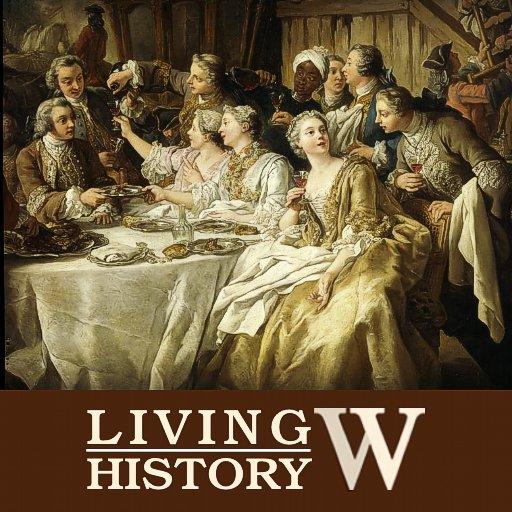One of the grandest items in the New Room was an engraved portrait of King Louis XVI of France in a magnificent gilt frame. Like much of the artwork in the room, this item was one that Washington brought back from his executive residence in Philadelphia.
 Charles-Clment Bervic after Antoine-Franois Callet, Louis Seize, Roi des Franais, Restaurateur de la Libert [Louis XVI, King of the French, Restorer of Liberty] , 1790 in its original frame. Mount Vernon Ladies Association [ W-767/A-B ]
Charles-Clment Bervic after Antoine-Franois Callet, Louis Seize, Roi des Franais, Restaurateur de la Libert [Louis XVI, King of the French, Restorer of Liberty] , 1790 in its original frame. Mount Vernon Ladies Association [ W-767/A-B ]
The print by Charles-Clment Bervic was published in 1790 after a painting by Antoine-Franois Callet, the kings official portraitist. Callets full-length portrait depicts Louis XVI wearing his opulent state robes.
The print by Charles-Clment Bervic was published in 1790 after a painting by Antoine-Franois Callet, the kings official portraitist. Callets full-length portrait depicts Louis XVI wearing his opulent state robes.
 Antoine-Franois Callet, Louis XVI, King of France and Navarre (1754-1793), wearing his grand royal costume in 1779 , 1789. The Apollo Salon, Palace of Versailles .
Antoine-Franois Callet, Louis XVI, King of France and Navarre (1754-1793), wearing his grand royal costume in 1779 , 1789. The Apollo Salon, Palace of Versailles .
Bervics engraving was given to Washington by French ambassador Jean-Baptiste Ternant on December 22, 1791.
Charles Willson Peale, Jean-Baptiste Ternant , 1781. Independence National Historic Park
Thirteen years earlier, a young Ternant had resigned his commission in the French Army and sailed across the Atlantic to join the Continental Army under Washingtons command, eventually rising to the rank of Inspector General for the Southern Department. Now serving his home country, Ternant clearly retained affection toward Washington, writing in a note that accompanied the portrait:
Permit me to present you with a new print of the king of the [F]renchI shall feel a very great Satisfaction if you will consider that feeble mark of my lively and respectfull attachment for your person, as worthy your kind acceptance.
 Bervics engraving of Callets portrait, unframed.
Bervics engraving of Callets portrait, unframed.
That same day, Washington replied to Ternant to express his thanks, writing,
I accept, with great pleasure, the new and elegant print of the King of the French, which you have been so obliging as to send to me this morning as a mark of your attachment to my person. You will believe me, Sir, when I assure you, that I have a grateful and lively sense of the personal respect and friendship expressed in your favor which accompanied the Print.
While this correspondence makes it sound as if the print was a token of Ternants own admiration for Washington, the portrait was likely part of a larger series of diplomatic gifts from King Louis XVI and the French regime. When he arrived in the United States in the summer of 1791, Ternant brought with him twenty impressions of Bervics engraving, which he presented to members of the U.S. government. Thomas Jefferson, then serving as Secretary of State, also received one .
The bottom of the frame, featuring George Washingtons initials and his family crest.
As Washington observed, the print was certainly elegant, but its frame was even more impressive. A palace style frame similar to others used for state portraits, it was clearly commission by Louis XVI as a gift to Washington. In the lower corners, the cartouches feature the presidents initials (G and W) with the Washington family crest in the middle. The monogram of the French king (L and XVI) appear in the top corners, while the center ornament features the French royal coat of arms topped with a pierced crown, and flanked by a Native American headdress on the right and the French cap of liberty on the left. This merging of symbols of the nations and their leaders emphasized the exceptional bond between France and the United States established by their alliance in the Revolutionary War.
The elaborate ornament at the top of the frame, featuring the French royal coat of arms topped by a pierced crown and flanked symbols of France and the United States.
Of course, when Ternant sent this portrait to Washington in December of 1791, France was experiencing the stirrings of revolt which would soon erupt into full-scale revolution. King Louis XVI was executed by guillotine on January 21, 1793, and Ternant was dismissed from his role as ambassador. Fearing repercussions from reproducing the overthrown kings image, Bervic actually cut his engraved copper printing plate in half ( he would later mend it back together after the Bourbon Restoration in 1814 ). Still, Washington hung this portrait in his New Room at Mount Vernon when he returned there in 1797, demonstrating his continued admiration for the monarch who provided critical aid in the American Revolution, as well as the U.S. governments declared policy of neutrality in the European conflicts precipitated by the radical revolution in France.
One interesting trend we have noticed while analyzing the New Room inventory is that almost everything hanging on the wall has a mate: two large looking glasses, two landscapes by Winstanley, two paintings by Beck, two religious pastels, and so on. So what was the mate to Louis XVI? It had to be John Trumbulls portrait of George Washington at Verplancks Point . The juxtaposition of these two menan absolute monarch beheaded by revolutionaries and a republican leader beloved by his peoplesurely provoked much interest and conversation among Washingtons guests.
Bervics engraving after Callet and John Trumbulls Washington at Verplancks Point , 1790 ( Winterthur Museum, Garden & Library )
Jessie MacLeod, Assistant Curator
[ Source ]
updated by @leopoldina: 06 Oct 2016 06:24:52AM






